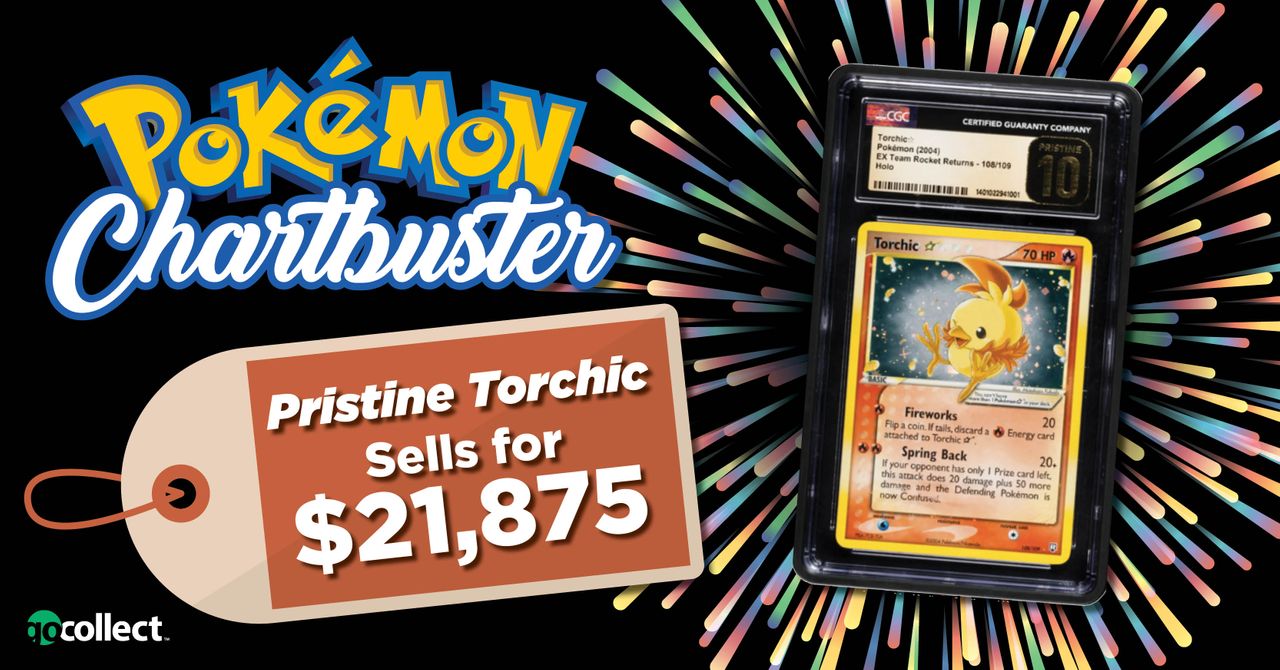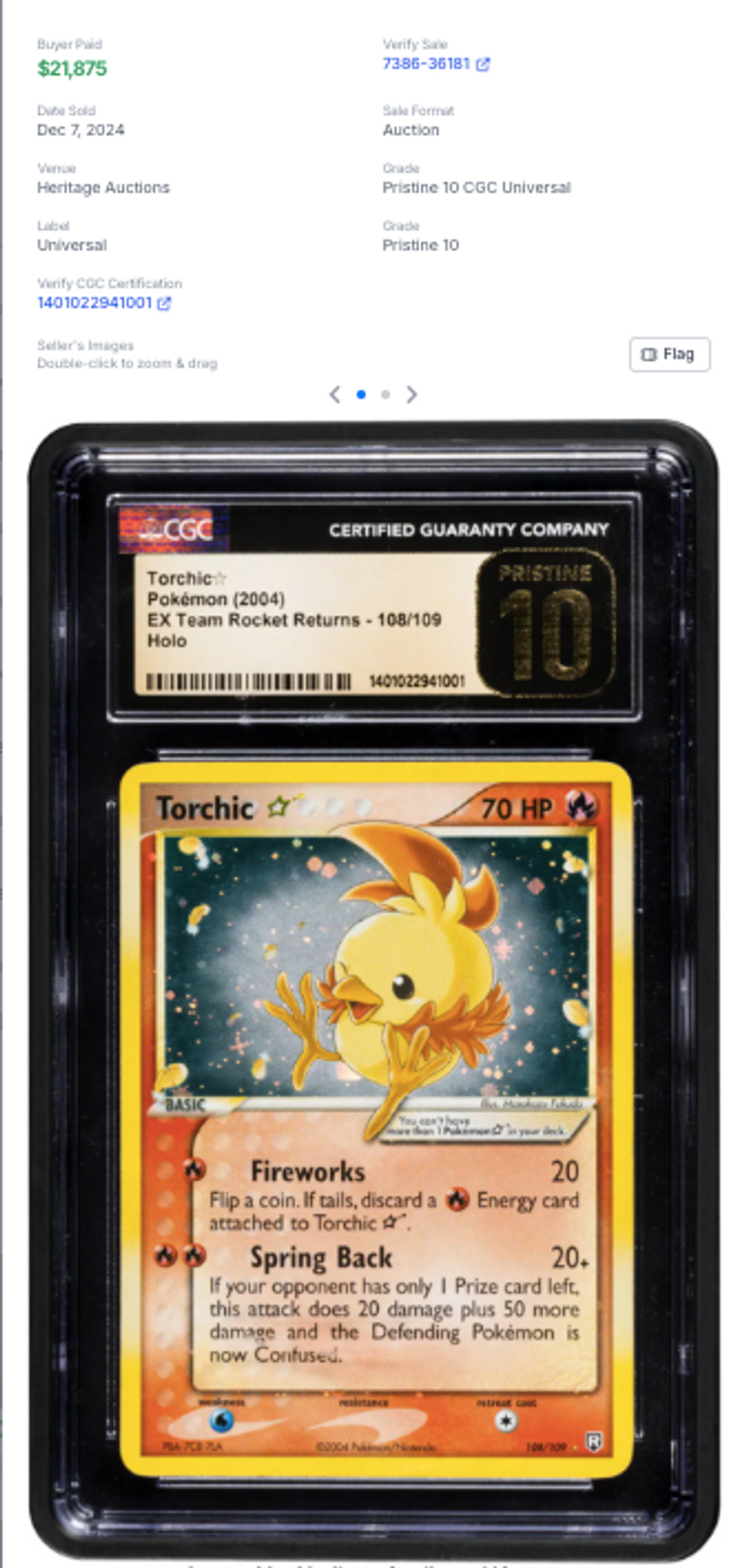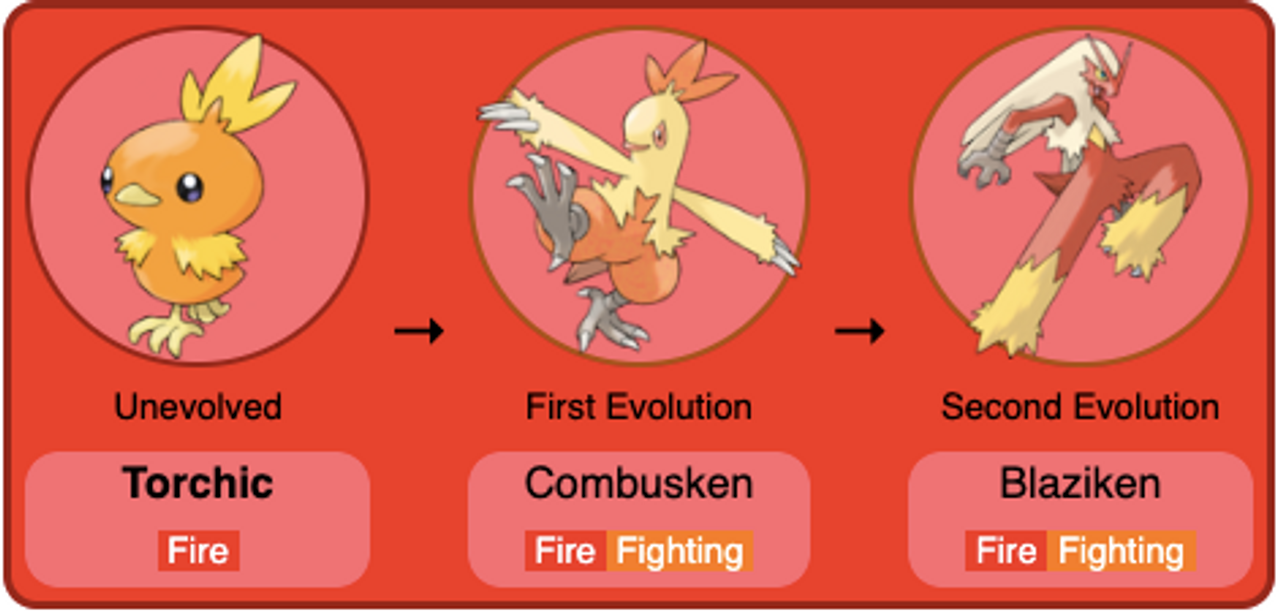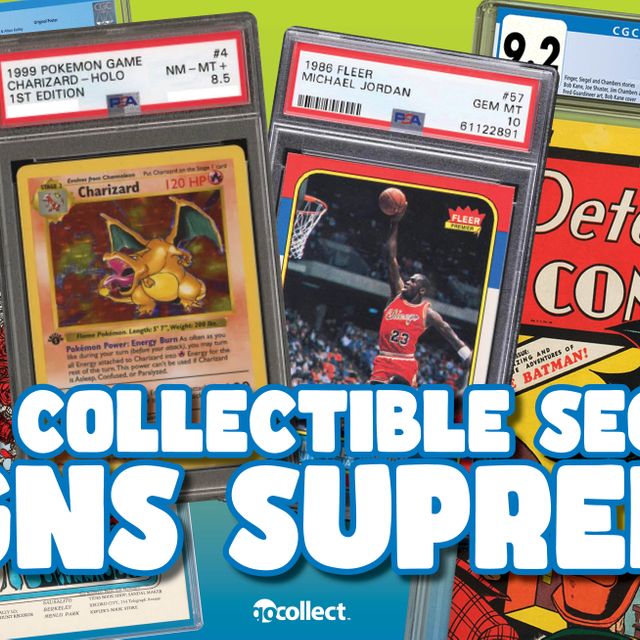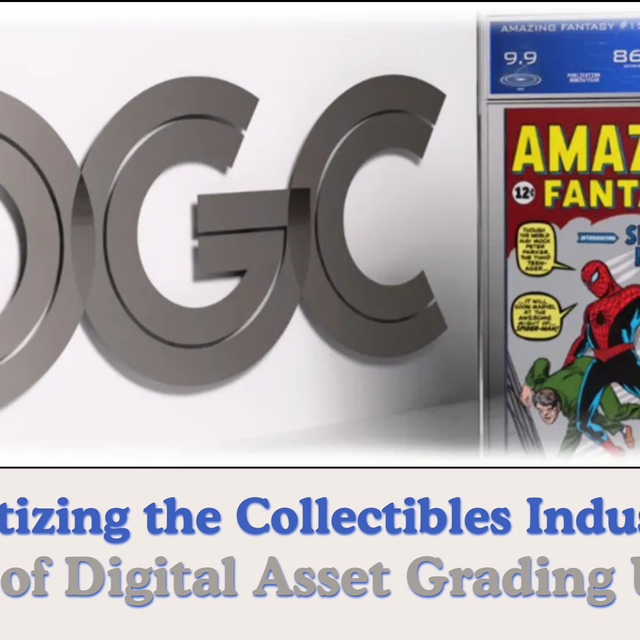On December 18th, GoCollect expanded its collectibles tracking toolkit to include the "Pokedex" -- a one-stop-shop for tracking Pokémon Trading Card Game (TCG) card prices. Since then, we've already witnessed two historic sales for the 2004 Torchic Gold Star Holo card. On December 7th, a CGC Pristine 10.0 Torchic card sold for an eye-popping $21,875. Just two days later, a CGC 10.0 Gem Mint Torchic card sold for $7,250.
For those of you who are new to Pokémon, the Torchic is a small orange-colored baby chicken with yellow feet, crest and wings. Don't be fooled by how adorable this chick looks; it has a flame sac inside of its body that enables this bird to spit 1,800 degree Fahrenheit fireballs. The Torchic first evolves into a Combusken; a Combusken can then evolve a second time into a Blaziken.
The Torchic made its debut in the third generation EX Ruby & Sapphire expansion of the Pokémon TCG and was drawn by Masakazu Fukuda. Like other Gold Star cards, this Torchic Gold Star holo card is extremely rare; the pull rate is roughly 1 card in every 72 booster packs. They are also very rare; CGC has graded only two copies of this card that have received a Pristine 10.0 grade.
The 10.0s that sold on December 7th and December 9th were the only two 10.0s that were sold publicly in 2024. While it may difficult to discern the difference between a "Pristine 10.0" and a "Gem Mint 10.0" card with the naked eye, a Gem Mint card has less than perfect centering or some other minor surface imperfection that cannot be detected without magnification. For these reasons, a Pristine 10.0 is more valuable than a Gem Mint 10.0.
Even though the differences between a Pristine 10.0 and Gem Mint 10.0 are almost imperceptible, there is huge difference in terms of value to collectors. In this particular case, the Pristine 10.0 Torchic card sold for nearly three times as much as the Gem Mint copy. Prior to these two sales, the high sale in 2024 for a CGC 9.5 copy of this card occurred on July 30th for $3,500. Two and a half months later, another CGC 9.5 sold for just $2,850.
The price volatility we've observed in this card during the past six months demonstrates some of the risks involved when you invest in single Pokémon cards. If you're a Pokémon card investor who invests in sealed booster boxes only, those boxes have more of an established retail price point in the marketplace unlike single cards which can experience more price volatility. On the other hand, purchasing a sealed booster box can be quite expensive; there's only one sealed 2003 Pokémon EX Ruby & Sapphire Booster Box currently listed on eBay and the seller is asking for $19,000 (or best offer). This 2004 Pokémon EX Fire Red & Leaf Green Booster Box sold for $21,078 on December 23rd after receiving 40 bids:
